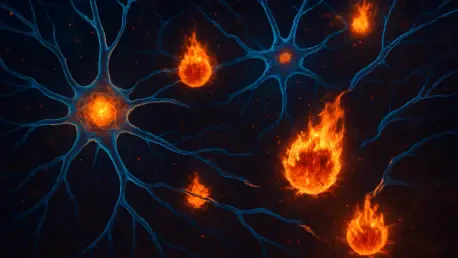Imagine a world where the brain’s fundamental energy processes, long thought to be set in stone, are suddenly redefined by a single discovery that could alter the course of treatment for devastating neurological conditions. Researchers from prestigious institutions have recently unveiled a groundbreaking finding that challenges everything previously understood about how neurons power themselves. Far from relying solely on glucose as their energy source, it turns out that neurons can also synthesize and burn fat to fuel their critical functions. This revelation not only reshapes scientific understanding of brain metabolism but also ignites hope for millions affected by rare and untreatable disorders. The discovery, centered on a specific protein’s role in fat metabolism, promises to open new therapeutic pathways, potentially transforming lives. As this research progresses, the medical community stands on the cusp of a revolution in addressing some of the most challenging brain-related impairments with innovative solutions.
Unraveling the Brain’s Hidden Energy Mechanism
At the heart of this scientific breakthrough lies the unexpected ability of neurons to independently produce and metabolize fat as an energy source, a process facilitated by a protein known as DDHD2. For decades, the assumption was that glucose served as the brain’s exclusive fuel, leaving little room for alternative theories. However, this recent finding reveals that neurons can recycle components of their own cells to create fats, which are then burned for energy to sustain vital activities like communication and repair. The implications of this are profound, as it suggests that the brain possesses a resilience and adaptability previously unrecognized. When the DDHD2 protein functions correctly, it ensures a steady energy supply, maintaining neuronal health. Yet, disruptions in this mechanism can lead to severe consequences, as seen in specific neurological conditions. This discovery provides a fresh perspective on how energy deficits in the brain might be addressed, paving the way for targeted interventions that could restore balance and function to impaired neurons.
A New Hope for Neurological Treatments
The significance of neurons burning fat for energy becomes even clearer when considering its potential to treat rare disorders such as Hereditary Spastic Paraplegia 54 (HSP54), a condition linked to malfunctions in the DDHD2 protein. This disorder hampers the brain’s ability to produce fats, resulting in energy shortages that manifest as progressive motor and cognitive impairments, often starting in early childhood. Laboratory experiments have shown remarkable promise, with damaged neurons regaining their energy production and functionality within just 48 hours after being treated with fatty acid supplements. This rapid recovery hints at a possible therapeutic strategy to reverse damage in HSP54 and potentially other neurological conditions with similar energy deficits. As research teams move toward preclinical testing to assess the safety and efficacy of fatty acid-based therapies, there is cautious optimism. Advanced, noninvasive imaging technologies are also being employed to speed up the development of these treatments, with the ultimate goal of translating lab successes into tangible benefits for patients.









